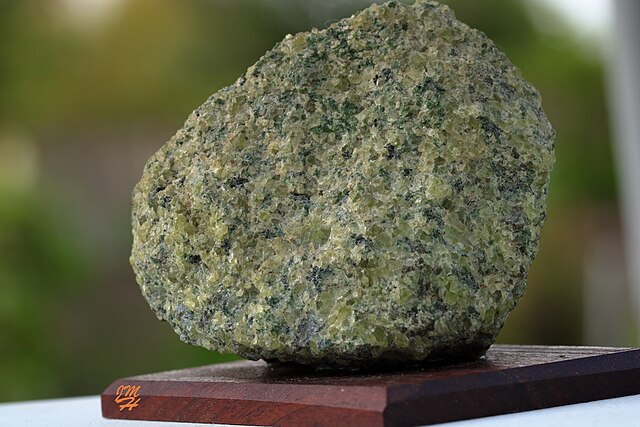Komatiite is a type of ultramafic mantle-derived volcanic rock defined as having crystallised from a lava of at least 18 wt% magnesium oxide (MgO). It is classified as a 'picritic rock'. Komatiites have low silicon, potassium and aluminium, and high to extremely high magnesium content. Komatiite was named for its type locality along the Komati River in South Africa, and frequently displays spinifex texture composed of large dendritic plates of olivine and pyroxene.
Komatiite lava at the type locality in the Komati Valley, Barberton Mountainland, South Africa, showing the distinctive "spinifex texture" formed by dendritic plates of olivine (scale shown by a hammer on the right edge of photo)
Komatiite sample collected from the Abitibi greenstone belt near Englehart, Ontario, Canada. Specimen is 9 cm wide. Bladed olivine crystals are visible, though spinifex texture is weak or absent in this sample.
Graph of komatiite geochemistry MgO% vs Cr ppm, from basal flows, Wannaway, Western Australia
Photomicrograph of a thin section of komatiite showing spinifex texture of pyroxene needle-like crystals
Ultramafic rocks are igneous and meta-igneous rocks with a very low silica content, generally >18% MgO, high FeO, low potassium, and are composed of usually greater than 90% mafic minerals. The Earth's mantle is composed of ultramafic rocks. Ultrabasic is a more inclusive term that includes igneous rocks with low silica content that may not be extremely enriched in Fe and Mg, such as carbonatites and ultrapotassic igneous rocks.
Peridotite, a type of ultramafic rock





